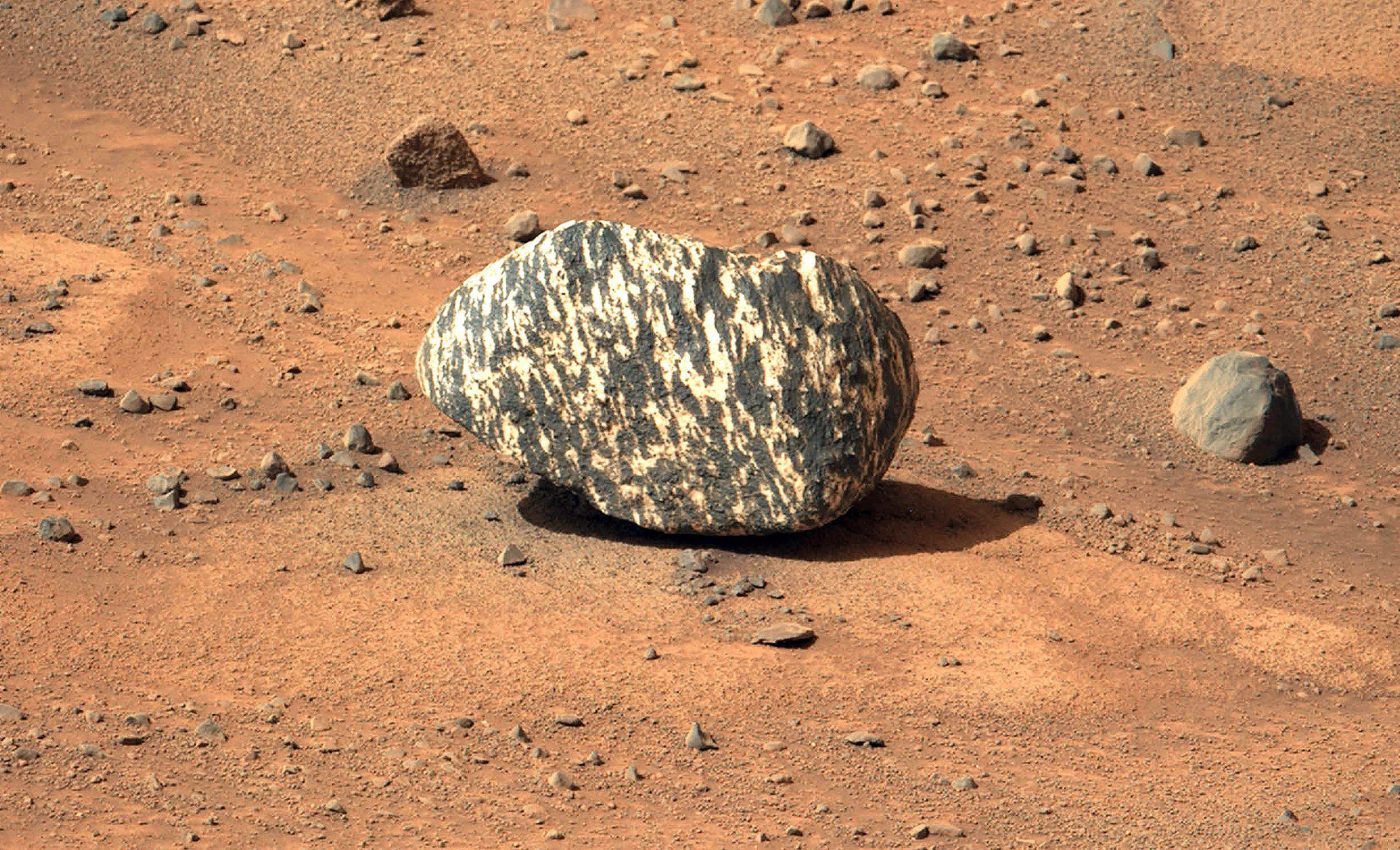
Strange rock with black and white stripes found on Mars has NASA 'excited'
Last week, NASA’s Perseverance rover spotted something that turned heads both on Earth and Mars: a black-and-white striped rock named “Freya Castle” that is unlike anything seen before on the Red Planet.
This peculiar find has sparked curiosity and enthusiasm among scientists and space enthusiasts alike.
According to Athanasios Klidaras, a Ph.D. student at Purdue University working with the mission team, this discovery could hint at even more intriguing finds as the rover continues its journey.
“This possibility has us excited, and we hope that as we continue to drive uphill, Perseverance will encounter an outcrop of this new rock type so that more detailed measurements can be acquired,” Klidaras enthused.
Climbing to the Jezero Crater rim
Perseverance has been steadily climbing the steep slopes leading to the rim of Jezero Crater. The goal of this part of the mission is to hunt for ancient rocks that might teach us about early Martian history.
For nearly a month, the rover has been making its way uphill. Initially, the steep terrain made progress slow. But recently, Perseverance found a flatter stretch, allowing it to cover more ground.
From this vantage point, it can see landmarks from earlier in the mission, like the “Kodiak” butte on the hazy horizon, dusted by nearby storms.
Spotting ‘Freya Castle’ among the pebbles
While traversing an otherwise unremarkable pebbly landscape, team members with keen eyes noticed something unusual in low-resolution images from the rover’s navigation camera.
They spotted a cobble with hints of an odd texture and gave it the name “Freya Castle.”
Athanasios Klidaras explained, “The team planned a multispectral observation using the Mastcam-Z camera in order to get a closer look before driving away.” They wanted to gather more data before the rover moved on.
When the detailed images came back a few days later, after Perseverance had already left the area, the team realized just how unique “Freya Castle” was.
The rock, about 8 inches across, displayed striking alternating black and white stripes.
“The internet immediately lit up with speculation about what this ‘zebra rock’ might be, and we’ve enjoyed reading your theories!” said Klidaras.
The unusual pattern has people wondering: what could have caused such distinctive stripes on Mars?
Solving the striped rock mystery
The science team believes that “Freya Castle” has a texture unlike any they’ve seen in Jezero Crater, and perhaps on the entire planet.
While they have limited information about its chemical composition, early thoughts are that igneous or metamorphic processes might have created the stripes.
This suggests the rock could have formed under intense heat or pressure, possibly pointing to volcanic activity or significant geological transformations in Mars’s past. It’s a tantalizing clue that could help piece together the planet’s geological history.
Past samples hint at water on Mars
This isn’t the first time Perseverance has made exciting discoveries. In 2022, the rover collected seven rock samples from the “fan front” of Jezero Crater. These rocks contain minerals typically formed in the presence of water.
The rover drilled into the Martian bedrock to extract pencil-sized cores, sealing them in tubes for future analysis on Earth.
Before drilling, it captured images of the surrounding sediments. Scientists analyzed these images to estimate the grain size and mineral composition.
Their findings suggest that these rocks were either deposited by water or formed within watery environments. This sheds light on the past conditions of the crater, hinting that water once flowed there.
The delta in Jezero Crater likely formed from sediment carried by a river into what is now a dry lakebed. If life ever existed on Mars, scientists speculate that it could be preserved within these rocks and sediment layers.
Significance of ‘Freya Castle’
Discoveries like “Freya Castle” add pieces to the puzzle, helping us understand where to look for signs of ancient life.
Since “Freya Castle” is a loose stone that differs from the underlying bedrock, it’s likely that it arrived from somewhere else, possibly rolling downhill from a higher source. This possibility has the team excited.
As Klidaras and his colleagues continue to guide Perseverance uphill, they hope to encounter an outcrop of this new rock type.
This would allow them to acquire more detailed measurements and perhaps unlock more secrets about Mars’s geological history.
“Freya Castle” isn’t the only interesting rock the rover has found recently. Ever since reaching the vicinity of the crater rim, the team has noticed a greater variety of rocks.
They’ve seen diverse collections of boulders at locations like “Mount Washburn.”
Could these rocks be our first glimpses of ancient materials uplifted from deep within Mars by the Jezero impact? It’s an exciting possibility that could provide valuable insights into the planet’s past.
What’s next for Perseverance?
As Perseverance continues its mission, there’s a sense of anticipation. What other surprises might be waiting just around the corner? The rover’s journey uphill may reveal more about Mars than we ever expected.
The discovery of “Freya Castle” has not only excited scientists but also captured the imagination of people worldwide. The team’s enjoyment of public theories highlights the collaborative spirit of space exploration.
The sighting of the “zebra rock” marks an exciting moment in the Perseverance mission. With each new discovery, we get a little closer to understanding the Red Planet. Who knows what the rover will find next? Only time will tell.
—–
Like what you read? Subscribe to our newsletter for engaging articles, exclusive content, and the latest updates.
Check us out on EarthSnap, a free app brought to you by Eric Ralls and Earth.com.
—–













